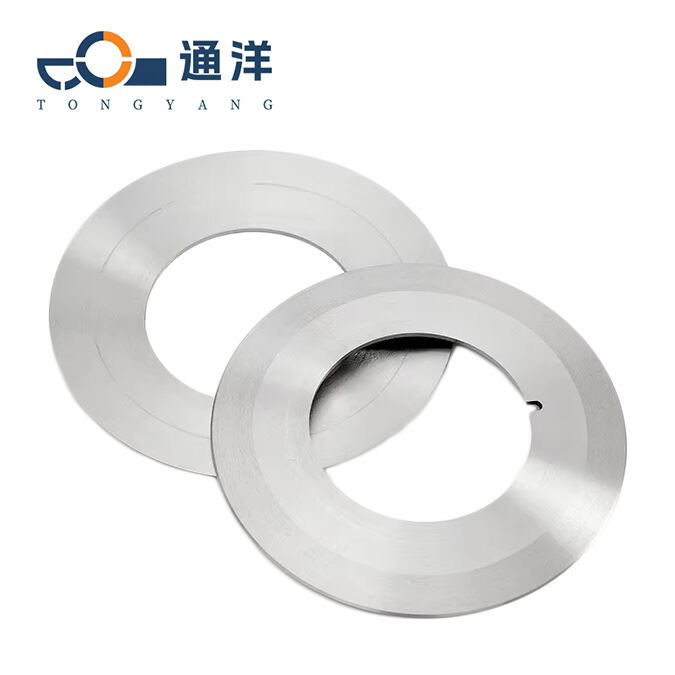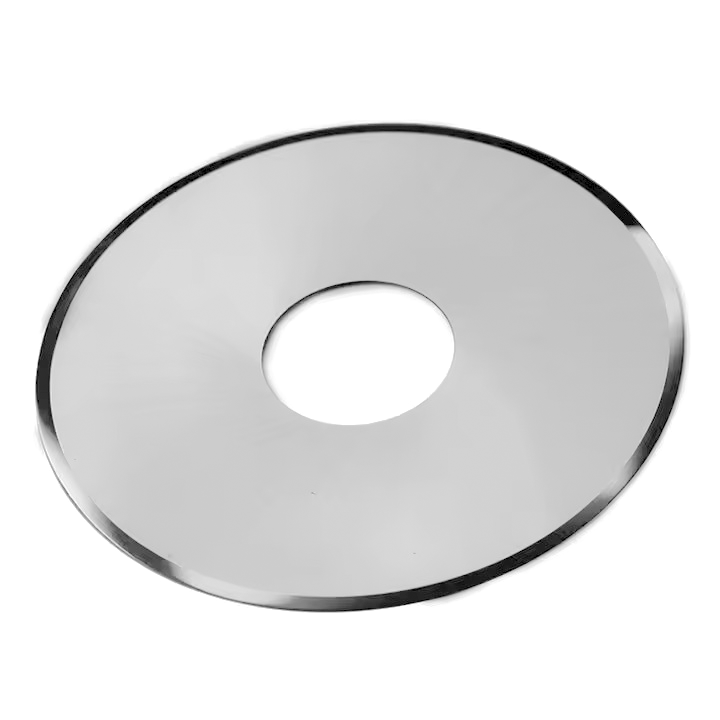What Are the Signs That My Circular Blade Needs to Be Replaced?
A circular blade is a hardworking tool, but even the best ones wear out over time. Knowing when to replace a circular blade is key to maintaining safety, efficiency, and quality in your work. Sharpening can extend a blade’s life, but there comes a point when sharpening isn’t enough—signs of irreversible damage or excessive wear mean it’s time for a new blade. This guide outlines the clear signs that your circular blade needs replacement, why ignoring these signs is risky, and how to make the most of your blade’s lifespan.
1. Sharpening No Longer Improves Performance
Sharpening is a temporary fix for dullness, but every circular blade has a limited number of sharpenings before it becomes too thin. Here’s how to tell if sharpening isn’t working anymore:
- Persistent Dullness: After sharpening, the blade still produces ragged cuts, requires excessive force, or causes burning. This means the blade’s edge is too worn to hold a sharp angle.
- Thinned Blade: Each sharpening removes a small amount of metal. Over time, the blade becomes noticeably thinner, especially near the edge. A thin blade flexes during cutting, leading to uneven results and increased vibration.
- Reduced Cutting Depth: A blade that’s been sharpened too many times may no longer cut as deep as it should. For example, a once-10-inch blade might now struggle to cut through 2-inch lumber due to lost thickness.
If sharpening fails to restore clean, easy cuts, the blade is past its useful life and needs replacement.
2. Visible Cracks or Chips That Can’t Be Sharpened Out
Small nicks or chips can often be fixed by sharpening, but larger or more severe damage makes the blade unsafe to use. Watch for these issues:
- Large Chips: Missing chunks of the blade’s edge (bigger than 1/8 inch) can’t be ground away without removing too much metal. These chips cause uneven cutting and increase the risk of the blade catching on material.
- Cracks in the Blade Body: Cracks—whether near the arbor hole, along the blade’s surface, or spreading from a chip—are dangerous. Spinning at high speeds, a cracked blade can shatter, sending metal fragments flying.
- Multiple Small Chips: Even small chips across the blade’s edge add up. They create uneven pressure during cutting, leading to vibration, poor cuts, and further damage to the blade or machine.
Any crack or large chip means immediate replacement—using a damaged blade is a safety hazard.
3. Warping or Bent Blade
A circular blade must stay flat to cut evenly. Warping (a slight twist) or bending (a noticeable curve) ruins performance and can damage your machine:
- Uneven Cuts: A warped blade cuts deeper on one side than the other, making precise work impossible. For example, a warped woodworking blade may leave one edge of the cut smooth and the other splintered.
- Rubbing Against the Machine: A bent blade may scrape against the saw’s guard, throat plate, or housing as it spins. This creates sparks, heat, and excessive wear on both the blade and machine parts.
- Vibration: Warping causes the blade to spin unevenly, leading to strong vibrations that make the saw hard to control and accelerate blade wear.
Warping is usually irreversible. Even minor warping that seems “fixable” will worsen with use, so replacement is the only safe option.

4. Severe Rust or Corrosion
Rust and corrosion eat away at the blade’s metal, weakening it and ruining its cutting edge. Signs that rust has become a problem include:
- Pitting: Small holes or indentations on the blade’s surface, especially near the edge. Pitting destroys the blade’s ability to hold a sharp edge.
- Flaky or Soft Metal: Rust weakens the blade, making it feel soft or crumbly in areas. This increases the risk of the blade breaking during use.
- Rust in the Arbor Hole: Corrosion around the center hole can make the blade fit loosely on the machine’s spindle, causing wobbling and unsafe operation.
Light rust can sometimes be cleaned, but severe corrosion that damages the blade’s structure means replacement is necessary.
5. Loose, Missing, or Broken Teeth
Blades with individual teeth (like wood or metal saw blades) rely on all teeth being intact and secure. Signs of tooth damage include:
- Missing Teeth: Gaps where teeth have fallen off create uneven cutting pressure, leading to vibration and rough edges.
- Loose Teeth: Teeth that wiggle or move can snap off during use, becoming dangerous projectiles.
- Broken Tooth Tips: Even partial tooth damage ruins the blade’s ability to cut cleanly, as the broken tooth tears material instead of slicing it.
Tooth damage is often caused by hitting hard objects (like nails) or excessive wear. Once teeth are missing or broken, the blade can’t be repaired and must be replaced.
6. Excessive Vibration or Unsafe Operation
Even if you can’t see obvious damage, a blade that makes the machine unsafe to use needs replacement. Signs include:
- Uncontrollable Shaking: The saw vibrates so strongly that it’s hard to hold steady, increasing the risk of injury.
- Loud, Unusual Noises: Grinding, screeching, or clunking sounds during use, indicating the blade isn’t spinning properly.
- Kickback: The saw jerks backward forcefully during cutting, a dangerous issue often caused by a damaged or misaligned blade.
Safety should always come first—if a blade makes the machine unsafe to operate, replace it immediately.
How to Extend Your Circular Blade’s Life
While replacement is inevitable, you can delay it by:
- Sharpening Regularly: Keep the blade sharp to reduce wear and avoid overheating.
- Cleaning After Use: Remove debris, sap, or adhesives to prevent corrosion and uneven wear.
- Storing Properly: Keep blades in a dry, padded case to avoid nicks, rust, or warping.
- Using the Right Blade for the Job: Match the blade’s material and design to the material you’re cutting (e.g., carbide-tipped for abrasive materials).
- Avoiding Hidden Debris: Check material for nails, staples, or rocks before cutting to prevent chips or cracks.
FAQ
How many times can a circular blade be sharpened before needing replacement?
Most blades can be sharpened 3–5 times. After that, they become too thin to hold a sharp edge safely.
Can a warped circular blade be fixed by bending it back?
No. Bending a warped blade risks creating cracks or making the warping worse. Warped blades must be replaced.
Is it safe to use a blade with small cracks if I’m careful?
No. Cracks grow under the stress of spinning, and a blade can shatter without warning. Always replace cracked blades.
My blade cuts unevenly but has no visible damage—what’s wrong?
Uneven cuts can mean the blade is dull, misaligned, or warped (even slightly). If sharpening and realigning don’t help, the blade is likely damaged and needs replacement.
How do I know if my blade is too old to use?
Age alone isn’t a sign, but blades over 5 years old (or heavily used) may have hidden fatigue or corrosion. If performance drops and maintenance doesn’t help, replace it.
Table of Contents
- What Are the Signs That My Circular Blade Needs to Be Replaced?
- 1. Sharpening No Longer Improves Performance
- 2. Visible Cracks or Chips That Can’t Be Sharpened Out
- 3. Warping or Bent Blade
- 4. Severe Rust or Corrosion
- 5. Loose, Missing, or Broken Teeth
- 6. Excessive Vibration or Unsafe Operation
- How to Extend Your Circular Blade’s Life
-
FAQ
- How many times can a circular blade be sharpened before needing replacement?
- Can a warped circular blade be fixed by bending it back?
- Is it safe to use a blade with small cracks if I’m careful?
- My blade cuts unevenly but has no visible damage—what’s wrong?
- How do I know if my blade is too old to use?

